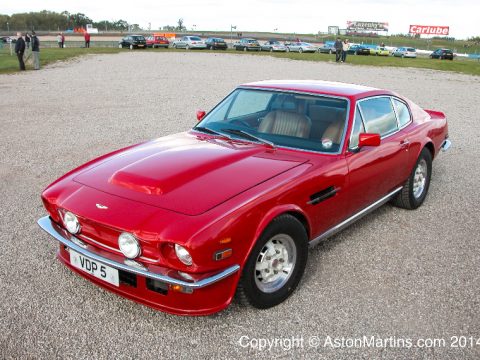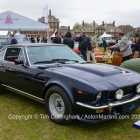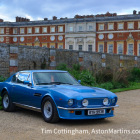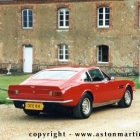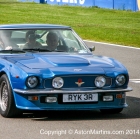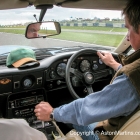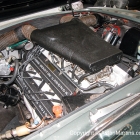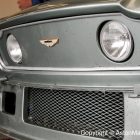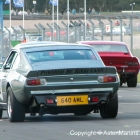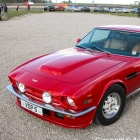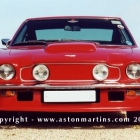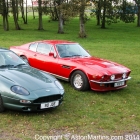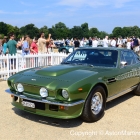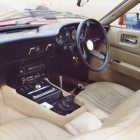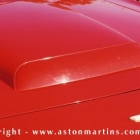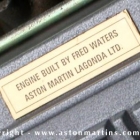The name ‘Vantage’ had previously been applied to cars with an optional uprated engine beginning with the DB2. There have also been occasional discrete models called Vantage such as the DB4 Vantage and AM Vantage. But the V8 Vantage became a distinct model line in it’s own right and was a significant upgrade of the standard V8 saloon.
Principle to the huge performance leap of the Vantage was a significant upgrade to the V8 engine which in the contemporary AM V8 was struggling to achieve 300 bhp. The carburettors were changed to the larger 48 IDF Weber which were fitted to revised inlet manifolds. Together with larger valves, revised exhaust manifolds, revised camshafts and a higher compression ratio, once run-in, the engines were capable of giving 375 to 380 bhp although at the time, the power output was described by AML as ‘adequate’. The chassis was also stiffened with adjustable Koni dampers, shortened springs and a larger front anti-roll bar. Wider 255/60 VR15 Pirelli CN12 tyres were fitted together with spacers to widen the track.
External modifications were aerodynamic in nature. The V8 Vantage was easily distinguished for the standard AM V8 by the front air dam, twin Cibie H4 driving lights within the blanked off grille (cooling air for the radiator being drawn in from beneath the bumper) and a boot lid spoiler at the rear. All of these aerodynamic additions were essential to reduce lift and also drag. Another feature was the use of a sealed bonnet bulge to cover a larger airbox above the down draught carburettors.
The first group of 16 cars have two distinctive and unique features. Firstly, the rear spoiler was added to the car after the body was built. Also, the bonnet bulge opening is sealed with a separate bolt on cover. Sometimes these very early cars are called the ‘Bolt-on’ Vantage. For the remaining 23 V540 Vantage production cars, the spoiler was made integral to the body and the opening in the bonnet bulge was welded shut during manufacture. These later cars are known as ‘flip tail’.
The Oscar India V8 Vantage, offered from October 1978, shared the less pronounced integral spoiler and neater bonnet of the AMV8 Oscar India saloon.
 The important car on the left was in fact the second production V8 Vantage, the first sold to a customer (Gordon Procter) and the first ever to be raced in anger at an AMOC race meeting in 1977. Over time, it has lost many of the original features of the early cars. When first built, the car had Perspex covers over the headlights, smaller 5 inch driving lights and bonnet with bolted in cover. The car now runs on non-standard 16 inch Gotti wheels in place of the 15 inch GKN‘s, probably to enable the use of wider, low profile tyres. It’s featured prominently one this page for two very good reasons. Firstly, it was the first Aston Martin I ever drove, but more important than that, is that it’s first owner and subsequent owner became firm friends of mine who I have been truly fortunate to meet through the Aston Martin Owners Club.
The important car on the left was in fact the second production V8 Vantage, the first sold to a customer (Gordon Procter) and the first ever to be raced in anger at an AMOC race meeting in 1977. Over time, it has lost many of the original features of the early cars. When first built, the car had Perspex covers over the headlights, smaller 5 inch driving lights and bonnet with bolted in cover. The car now runs on non-standard 16 inch Gotti wheels in place of the 15 inch GKN‘s, probably to enable the use of wider, low profile tyres. It’s featured prominently one this page for two very good reasons. Firstly, it was the first Aston Martin I ever drove, but more important than that, is that it’s first owner and subsequent owner became firm friends of mine who I have been truly fortunate to meet through the Aston Martin Owners Club.
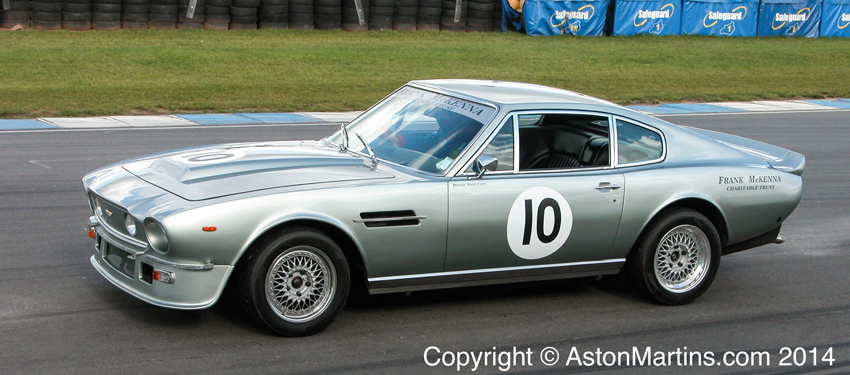
An early production V8 Vantage from 1977, one of only four built with the smaller 5 inch driving lights
The term ‘series 1’ is a classification from the AMOC register, strictly speaking, these first examples of the V8 Vantage should be called ‘V540’ as used by the factory – 540 comes from the prefix to the engine number.
The V8 Vantage pages have been written with the kind assistance of Kean Rogers of the Kangaroo Stable. For more detained information, please visit www.v8vantage.com



